(in my opinion)
If you tackle serious terrain in your hiking, you need a serious hiking stick. Long and stout, the hiking stave I have come to prefer brings a whole new dimension of fun and enjoyment to the pastime.
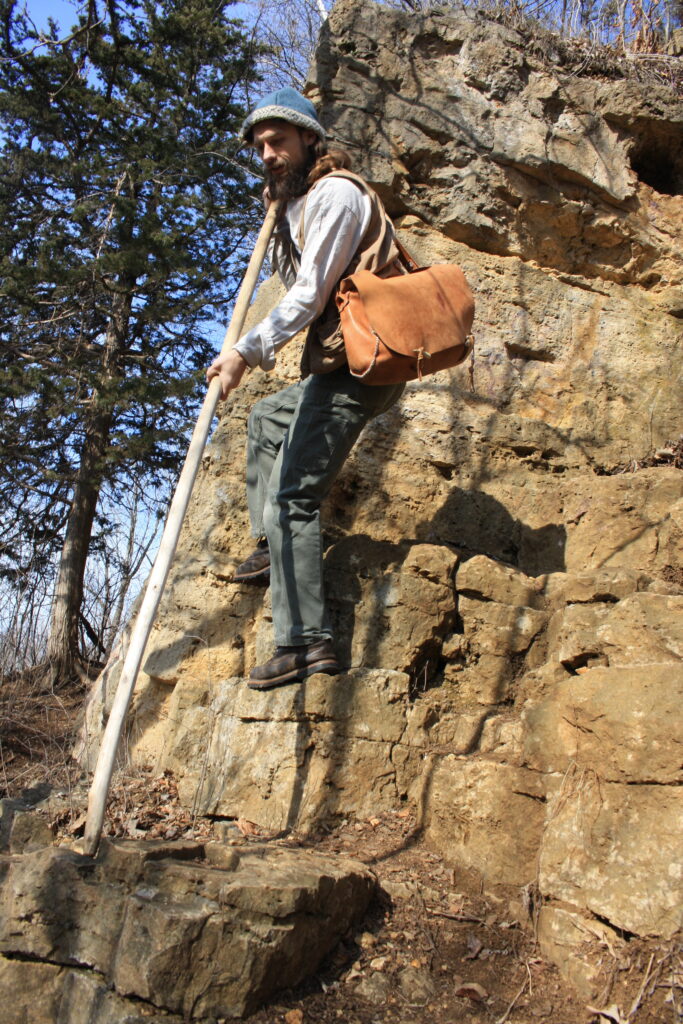
You find plenty of fancy, expensive walking sticks in all those modern outdoor outfitter brands. Lots of mystery metals and plastics and rubbers and whatnots have been factory-ed together to make a… well, a stick. I’d say here is material proof that we modern people really can complicate almost any simple concept such as a walking stick into something that needs to be outsourced and fabricated anywhere other than your own local area.
I say, let us go the peasant way, shall we?
As with most things, I draw upon historical and cultural examples for inspiration. The inspiration for my hiking stick comes from several different regions of vastly different terrains. Take a look at these three examples:
The Hiking Stick of the Alps
Those who lived and traversed the Alpine regions, used a long lance or iron-shod pole for mountain-climbing. This was the original alpenstock, or Alpine stick. In steep, rocky terrain, the long pole acts as a third leg. Interestingly, the ice axe of today originally developed from this long hiking stick. Climbers used to carry a small axe as well to cut footholds in ice and snow. Eventually, the alpenstock evolved to integrate the two peasant tools together.

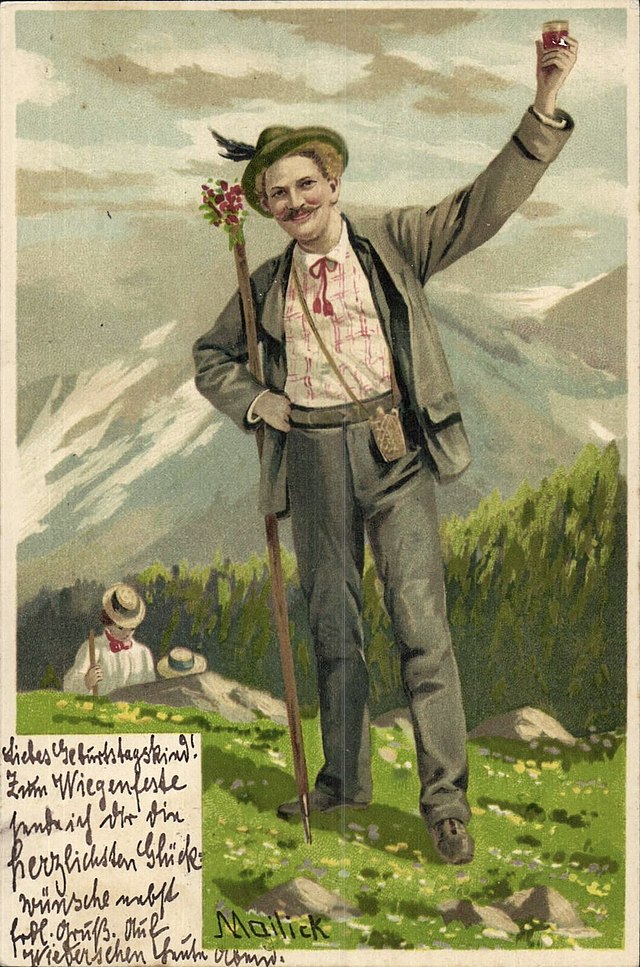
The Origin of Pole-Vaulting
The pole-vaulting we know of as a sport nowadays has its origins along the North Sea coast in the the Low Countries–that is, the Netherlands, Friesland, Schlweswig-Holstein and Denmark. With mazes of marshes, ditches and canals to negotiate, farmers used a pultstock, as seen below.
Interestingly, in the Battle of Hemmingstedt, the farmers of Dithmarschen used the pultstock to outmaneuver and defeat a larger, superior army of Danes.
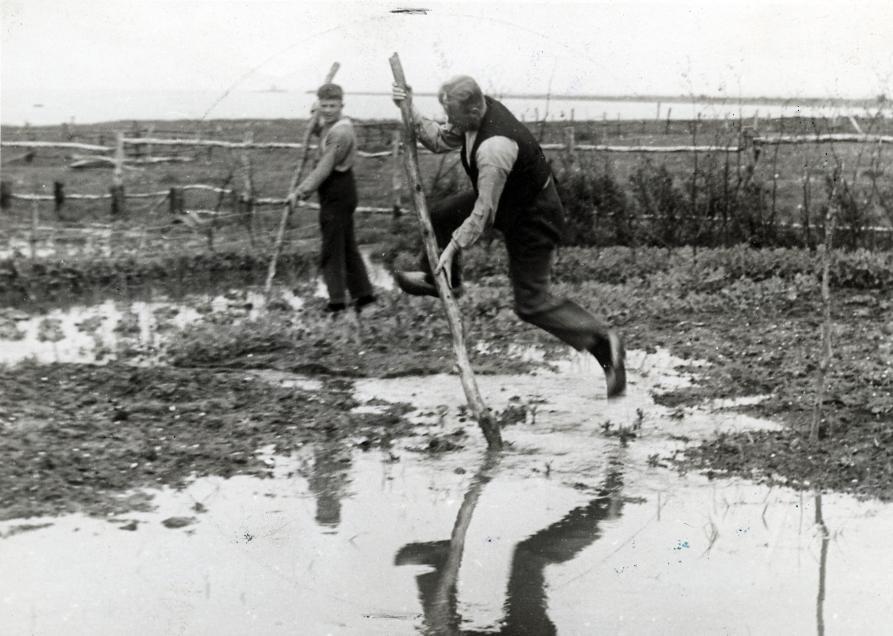
The Canary Islands
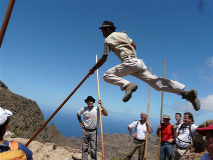
This last example is called el Salto del Pastor (the shepherd’s leap) probably the most exciting. Probably that is because it is still alive and well today and the most dramatic in its use. It’s actually amazing that it is not more widely know. I regret that I don’t have access to better photos of this. For a better idea, I recommend looking up some videos of the Salto del Pastor.
The Canary Islands are an incredibly strange and beautiful group of islands in the Atlantic. Traditionally, using a method that may originate from the mysterious Guanche people, the shepherds of the Canary Islands negotiate insanely rugged terrain. That means a longer stick (up to 4 meters) really makes one fly over the boulder-strewn mountainsides.
This hiking stick (called a lanza, or lance) has a carefully polished shaft. This enables the the shepherd to take tremendous leaps down the mountain, by planting the iron spike in the ground below and sliding down the pole. It can be a sport in and of itself!
Selecting the Right Wood for a Hiking Stick.
You want a wood that is tough and flexible. It needs to potentially support the weight of your body. Therefore, a good hardwood is imperative. For goodness sake, don’t opt for some pinewood dowel from the hardware store, ok?
The best wood for your rough terrain hiking stick is seasoned ash wood. It is straight grained, hard and flexible. In fact, the ancestors preferred it above all other woods for spear poles. This was so much so that even in Anglo-Saxon English, the word for ash wood and the word for spear could be synonymous: æsc.
Ash is most manly of woods! For with ash, you can make bows, spears, skis, tool handles, and…hiking sticks!
You have a Long Stick?
How long do you want your stick? You like it really long? Or what is too long? Does size matter? Ok, enough of the innuendos. I’m done.
A shorter stick is lighter to carry. However, with a longer stick, you can really negotiate some pretty awesome distances. Therefore, for a man 6 ft tall, a happy medium is between 7 and 8 ft.
A New Name
Whether leaping over creeks, or down rock ledges, give this hiking stick a go! It makes hiking into a bit of a proto-sport!
I have christened my hiking stick the springstock, or jump-stick. It has become a year-round tool, for I also use it as a single pole in Nordic skiing. This hearkens back to the ancient method of skiing. But that is another subject for another post… ~Nathanael
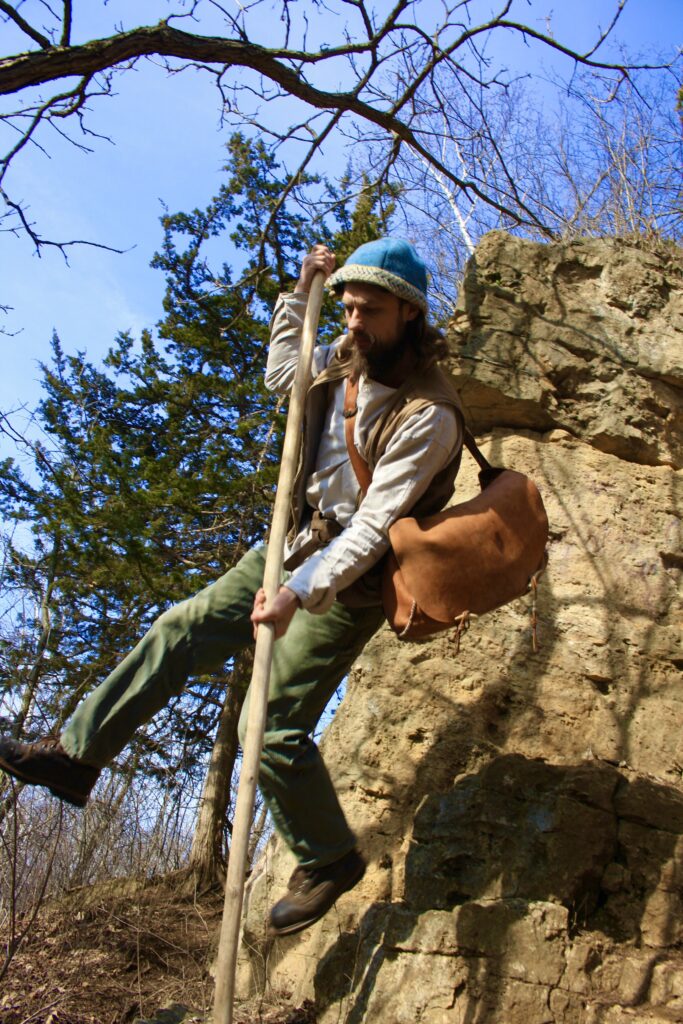


Leave a Reply